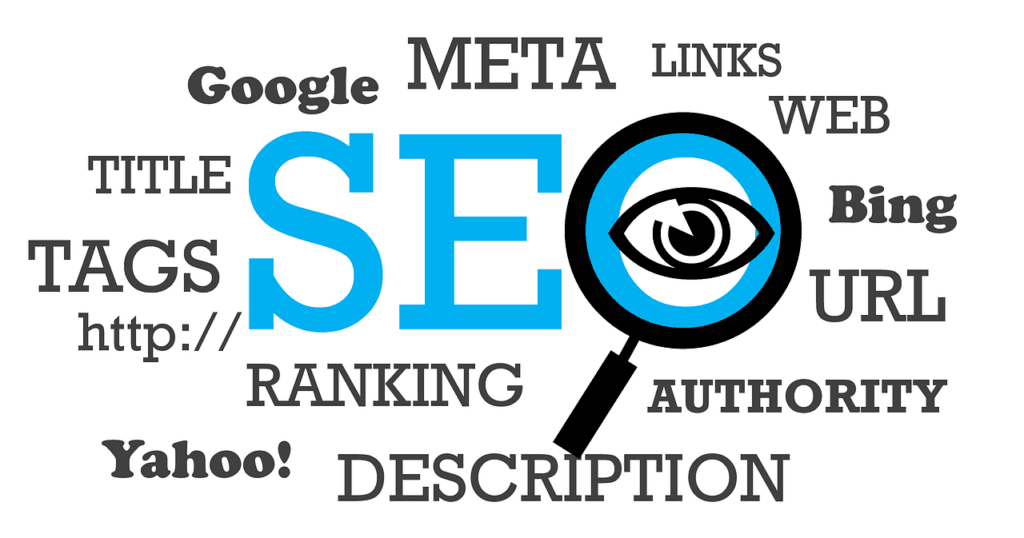This Article has been revised, edited and added to, by Poulomi Chakraborty.
- The SEO Landscape – A Primer for Small Business Owners
- Keyword Research – The Cornerstone of SEO
- Identifying Your Keyword Universe
- Utilizing Keyword Research Tools
- Crafting a Balanced Keyword Strategy
- The Evolution of Keyword Research in Entrepreneurial Banking
- Semantic Search and User Intent
- Competitor Keyword Analysis for Strategic Insights
- Integrating Keywords Naturally into Content
- The Dynamic Nature of Keyword Research
- Content Creation – Weaving Narratives that Resonate
- Link-Building – Crafting a Web of Trust and Authority
- Understanding the Power of Links
- Types of Links and Their Roles
- Crafting a Link-Building Strategy
- Establishing Relationships with Industry Influencers
- Leveraging Content to Earn Links
- Participating in Industry Forums and Discussions
- Hosting and Participating in Webinars
- Utilizing Social Media to Amplify Your Link-Building Efforts
- Tracking and Analyzing Your Link-Building Efforts
- Analytics – Steering Towards Success Through Insight
- Understanding the Role of Analytics
- SEO Analytics Tools
- Leveraging Insights for Strategy Refinement
- Embracing Comprehensive Analytics Platforms
- Advanced Segmentation for Targeted Insights
- Utilizing Predictive Analytics for Forward-Looking Strategies
- Enhancing User Experience Through Behavioral Analytics
- Integrating Social Media Analytics for a Holistic View
- Establishing a Culture of Data-Driven Decision Making
- Conclusion: Crafting a Beacon of Trust and Authority in the Entrepreneurial Banking Landscape
In the vibrant landscape where entrepreneurship meets the digital era, stands a potent ally—Search Engine Optimization (SEO). Small business owners, the modern-day warriors who wear many hats, need to harness the full potential of SEO to ensure their banking initiatives not just shine but dominate in the competitive online sphere. As we navigate through the universe of “Entrepreneurial Banking: SEO for Small Business Owners”, we unfold a roadmap that promises not just visibility but a beacon of trust, reliability, and authority in the online financial cosmos.
In this comprehensive guide, we delve deep into crafting SEO strategies tailored for the entrepreneurial spirit. From the intricacies of keyword research to the art of link-building, and the data-driven world of analytics; we bring you a curated pathway, steering your banking endeavors to a haven of online success. Strap in as we journey through the digital pathways, crafting an SEO strategy that stands as a beacon of success in the entrepreneurial banking landscape.
The SEO Landscape – A Primer for Small Business Owners

For a small business owner venturing into the SEO landscape, it is essential to start with a firm grounding in what SEO entails and how it can be a game-changer in the entrepreneurial banking space.
Understanding the SEO Basics
- SEO Defined: Discover what SEO stands for and its pivotal role in enhancing online visibility.
- SEO and Entrepreneurial Banking: Explore how SEO dovetails with entrepreneurial banking, offering a symbiotic relationship that fosters growth.
The Importance of SEO for Small Business Owners
- Visibility and Reach: Understand the role of SEO in enhancing the online presence, a critical tool in the modern banking landscape.
- Building Trust and Authority: Learn how a well-crafted SEO strategy can foster trust and build an authoritative digital presence.
Understanding the SEO Ecosystem
The SEO ecosystem is vast, comprising various elements that work in tandem to boost your online visibility and ranking. At its core, SEO is about understanding what your potential customers are searching for online, the words they’re using, and the content they wish to consume. It’s not just about search engines but about creating a user experience that is informative, engaging, and easy to navigate.
Advanced Keyword Strategy
Developing an advanced keyword strategy involves a deeper analysis of not just what terms your audience is searching for but also the intent behind these searches. This approach moves beyond basic keyword research, requiring you to anticipate the needs and questions of your target audience and provide solutions through your content. By focusing on user intent, you can craft content that answers questions, solves problems, and truly engages your audience, thereby improving your SEO rankings and visibility.
Crafting Content That Meets User Intent
To meet user intent, your content must be comprehensive and authoritative, addressing not only the what but also the why and how. This involves creating detailed guides, how-to articles, and thought leadership pieces that demonstrate your expertise and authority in the entrepreneurial banking sector. Such content not only attracts visitors but also encourages them to spend more time on your website, a key factor in SEO success.
Leveraging Local SEO
For small business owners, local SEO is a critical aspect of their digital strategy. This involves optimizing your online presence to appear in local search results, which is especially important for businesses that have a physical location or serve a specific geographical area. Incorporating local keywords, managing Google My Business listings, and gathering local reviews are all strategies that enhance your visibility in local search results, making it easier for nearby customers to find you.
Building a Strong Local Presence
A strong local presence requires a consistent NAP (Name, Address, Phone number) across all online platforms, including your website, social media profiles, and directory listings. Engaging with your local community through events, sponsorships, and local partnerships can also enhance your local SEO efforts, creating backlinks and generating buzz that boosts your online visibility.
Technical SEO: The Backbone of Your Online Presence
While content and keywords are crucial, the technical health of your website is the backbone of your SEO strategy. This includes optimizing site speed, ensuring mobile responsiveness, and implementing structured data to help search engines better understand your content. A technically sound website offers a seamless user experience, encouraging visitors to stay longer and engage more deeply with your content.
Ensuring a Seamless Mobile Experience
With the majority of searches now performed on mobile devices, a mobile-friendly website is no longer optional. This means fast loading times, responsive design, and content that is easily digestible on a smaller screen. Google’s mobile-first indexing further underscores the importance of a mobile-responsive website, making it a critical component of your technical SEO strategy.
Continuous Learning and SEO Evolution
The SEO landscape is ever-evolving, with search engine algorithms constantly updating and user behaviors changing. For small business owners in the entrepreneurial banking sector, staying informed and adapting to these changes is vital. This requires continuous learning, experimenting with new strategies, and refining your approach based on analytics and performance data. The journey of SEO is one of ongoing optimization, innovation, and adaptation.
Embracing Analytics for Strategic Insights
Regularly reviewing your website’s analytics provides insights into what’s working and what isn’t. This data-driven approach allows you to refine your SEO strategy, focusing on high-performing content and keywords, while also identifying areas for improvement. Leveraging tools like Google Analytics and SEMrush can offer comprehensive insights into your website’s performance, enabling data-driven decisions that drive SEO success.
Keyword Research – The Cornerstone of SEO

At the core of any successful SEO strategy lies meticulous keyword research, a process that entails identifying and analyzing the terms that people enter into search engines. In the context of entrepreneurial banking, this chapter will be your guide to handpicking those golden keywords that resonate profoundly with small business owners, serving as a bridge connecting their needs to your solutions.
Identifying Your Keyword Universe
In the vast cosmos of words, it is imperative to pinpoint those that resonate with your target audience:
- Understanding Your Audience’s Language: Begin with understanding the terminologies your audience uses, laying a foundation for a keyword strategy that speaks their language.
- Competitor Analysis: Employ a detailed competitor analysis to uncover the keywords that are working for them, offering insights into the market’s demands.
Utilizing Keyword Research Tools
Equipping yourself with the right tools can be a game-changer in your keyword research journey:
- Google Keyword Planner: Discover how to make the most of Google Keyword Planner, a tool offering a treasure trove of keyword insights.
- SEMrush: Learn the ropes of SEMrush, a tool that offers not just keyword analytics but a comprehensive SEO toolkit.
Crafting a Balanced Keyword Strategy
A winning keyword strategy is one that strikes a perfect balance between various elements:
- Short-Tail Keywords: Get acquainted with short-tail keywords, a tool to attract a broad audience while facing high competition.
- Long-Tail Keywords: Dive into the world of long-tail keywords, your ally in targeting a niche audience with precise, detailed phrases.
The Evolution of Keyword Research in Entrepreneurial Banking
In the realm of entrepreneurial banking, keyword research transcends traditional boundaries. It’s not merely about identifying terms with high search volumes; it’s about discovering the questions, concerns, and conversation topics prevalent among small business owners. This sector requires a keen understanding of financial trends, regulatory changes, and the unique challenges faced by entrepreneurs seeking banking and financial services.
Unearthing Niche Keywords
The quest for niche keywords involves diving deep into the specificities of the entrepreneurial banking sector. This means moving beyond general terms to more specific phrases that capture the intricacies of your services. For instance, rather than targeting broad terms like “business loans,” delve into specific offerings such as “short-term working capital loans for startups” or “SME equipment financing solutions.” This precision not only reduces competition but also increases the relevance of your content to your target audience.
Semantic Search and User Intent
As search engines become more sophisticated, they place greater emphasis on understanding the intent behind searches. This evolution means that keyword research must also adapt, focusing on semantic search principles. Semantic search considers the context, user intent, and the relationships between words, not just the words themselves.
Crafting Content That Aligns with Semantic Search
To align with semantic search, start by mapping out the questions and problems your target audience is likely to have. Then, develop content that answers these questions comprehensively. For example, if you identify that small business owners are searching for “how to finance a startup,” create content that not only addresses startup financing options but also the strategic considerations involved in choosing the right type of financing, the application process, and tips for success.
Competitor Keyword Analysis for Strategic Insights
Analyzing the keywords your competitors are targeting offers invaluable insights that can inform your own strategy. This process involves identifying not only the keywords but also the content gaps and opportunities to differentiate your offering.
Leveraging Competitor Insights for Competitive Advantage
By understanding the keywords for which your competitors rank well, you can identify areas where your content can provide additional value or a unique perspective. This doesn’t mean simply mimicking their strategy but rather identifying opportunities to carve out your own niche. For example, if competitors focus heavily on generic banking advice, you might focus on the specialized needs of tech startups or the unique challenges faced by female entrepreneurs.
Integrating Keywords Naturally into Content
The integration of keywords into your content should feel natural and organic, enhancing the reader’s experience rather than detracting from it. Keyword stuffing is a practice of the past; today, the focus is on creating engaging, informative content where keywords fit seamlessly into the narrative.
Strategies for Organic Keyword Integration
Start with the title and headings, ensuring they are compelling and include your primary keyword. From there, sprinkle your chosen keywords throughout the content in a way that feels natural. Use synonyms and related terms to enrich the content and align with semantic search principles. For instance, alongside your primary keyword, use related terms that a business owner might use when seeking information on the topic.
The Dynamic Nature of Keyword Research
Keyword research is not a set-it-and-forget-it task. The digital landscape, especially within entrepreneurial banking, is constantly evolving. Regularly revisiting and updating your keyword strategy ensures that your content remains relevant and competitive.
Embracing the Continuity of Keyword Research
Stay abreast of industry trends, regulatory changes, and the shifting landscape of entrepreneurial needs to refine your keyword list continuously. Utilize analytics to monitor the performance of your keywords, and don’t hesitate to adjust your strategy based on what the data tells you. Engaging with your audience through surveys, social media, and feedback forms can also provide direct insights into the terms and topics that matter most to them.
Content Creation – Weaving Narratives that Resonate

In the entrepreneurial banking sector, content acts as a beacon, guiding small business owners to financial solutions crafted with them in mind. Let’s dive into the nuances of creating content that doesn’t just speak but resonates deeply with your audience, fostering a bond that goes beyond transactions.
Understanding Your Audience
Before we set the pen on paper, understanding the tapestry of your audience’s needs, aspirations, and pain points is paramount:
- Creating Buyer Personas: Learn how to craft detailed buyer personas, a foundation to understanding your audience’s unique needs and crafting narratives that resonate.
- Feedback and Reviews: Unravel how feedback and reviews can be a goldmine of insights, offering a lens into your audience’s expectations and experiences.
Crafting Engaging Content
Engagement stands as the currency in the digital landscape. Here we explore avenues to craft content that is not just read, but felt:
- Storytelling: Dive into the art of storytelling, a tool that fosters connections, builds trust, and guides your audience on a journey that promises value and reliability.
- Multimedia Integration: Learn the nuances of integrating multimedia elements, a strategy to engage users through varied formats, enhancing user experience exponentially.
SEO-Optimized Content
Here we delve into crafting content that is fine-tuned to SEO principles, promising visibility and ranking:
- Keyword Integration: Unravel strategies to integrate keywords seamlessly, enhancing SEO without compromising on content quality.
- Meta Descriptions and Headers: Learn the vital role of meta descriptions and headers in SEO, tools to guide search engines and users alike to the value that awaits within your content.
The Art of Storytelling in Financial Content
Storytelling is a powerful tool in any content creator’s arsenal, particularly in a sector as complex and often impersonal as banking. The key to successful storytelling is to humanize your content, making the complex world of entrepreneurial finance relatable and understandable to your audience.
Crafting Relatable Financial Stories
Start by sharing success stories of entrepreneurs who have benefited from your banking services. Highlight the challenges they faced, the solutions you provided, and the impact on their business. These stories not only demonstrate your understanding of the entrepreneurial journey but also showcase your products and services in action, providing tangible examples of how you can support your customers’ success.
Educating Your Audience Through Content
In the fast-paced world of startups, founders are constantly seeking knowledge and insights that can help them navigate the complexities of growing their business. Your content should serve as a valuable resource, offering not just information but also actionable advice that entrepreneurs can apply to their own situations.
Developing Comprehensive Guides and Resources
Consider creating comprehensive guides on topics such as financing options for startups, navigating regulatory requirements, or managing cash flow. These resources should go beyond surface-level advice, diving deep into the subject matter to provide real value. By positioning your brand as a thought leader and a trusted source of information, you can build a loyal following among startup founders.
Leveraging Multimedia to Enhance Engagement
In today’s digital landscape, content goes beyond text. Multimedia elements like videos, podcasts, and infographics can significantly enhance engagement, making complex topics more accessible and enjoyable for your audience.
Multimedia Strategies for Financial Content
For example, video tutorials explaining different banking products or financial strategies can be extremely effective. Podcasts featuring interviews with successful entrepreneurs or financial experts can provide valuable insights while also humanizing your brand. Infographics can distill complex financial data into digestible, visually appealing content that is easy to share, extending your reach on social media platforms.
SEO-Optimized Content for Maximum Reach
While crafting engaging and informative content is crucial, ensuring that this content is seen by your target audience is equally important. SEO optimization ensures that your content ranks highly in search engine results, increasing visibility and driving organic traffic to your site.
Integrating SEO Without Compromising Quality
The integration of keywords should feel natural and add value to the content. Use keywords strategically in titles, headings, and throughout the body of your content, but always in a way that maintains the natural flow and readability. Additionally, optimizing images and videos with descriptive file names and alt text can enhance your SEO efforts, making your multimedia content more discoverable.
Building a Community Through Content
Content creation is not a one-way street; it’s about building a community and fostering a dialogue with your audience. Encouraging interaction through comments, social media shares, and feedback can provide valuable insights into your audience’s needs and preferences, allowing you to tailor your content strategy accordingly.
Encouraging Engagement and Feedback
Make it easy for readers to leave comments and share your content on social media. Regularly engage with your audience by responding to comments and questions, both on your platform and on social media channels. This interaction not only builds a sense of community but also signals to search engines that your content is valuable and engaging, further boosting your SEO efforts.

Related: Check out our free SEO suite

Link-Building – Crafting a Web of Trust and Authority
In the entrepreneurial banking domain, link-building serves as a dynamic highway, fostering connections, and guiding your audience through a curated journey of value, reliability, and trust. Let us delve deeper into crafting a strategy that stands as a beacon of authority in the vibrant digital landscape.
Understanding the Power of Links
Before embarking on the link-building journey, it is essential to grasp the immense potential that links hold in the SEO landscape:
- SEO Rankings: Explore how links serve as a strong ranking signal for search engines, enhancing your visibility manifold.
- Referral Traffic: Learn how a well-crafted link-building strategy can be a potent tool to drive referral traffic, guiding users to your portal through various trusted avenues.
Types of Links and Their Roles
As we venture into the world of links, it is paramount to understand the diverse tapestry of links and their individual roles:
- Internal Links: Get acquainted with internal links, tools to guide users seamlessly through your digital landscape, enhancing user experience and fostering engagement.
- Backlinks: Discover the potent world of backlinks, avenues to build authority and foster trust, a testimony to your credibility in the entrepreneurial banking space.
Crafting a Link-Building Strategy
With a foundational understanding of links, let us venture into crafting a link-building strategy that promises growth and authority:
- Quality over Quantity: Learn the golden rule of link-building, a focus on quality over quantity, fostering connections that are not just numerous but valuable.
- Outreach and Collaboration: Dive into the collaborative world of link-building, learning the ropes of outreach, a strategy to foster alliances and build a network of value and trust.
Establishing Relationships with Industry Influencers
The digital age has underscored the value of relationships in building an online presence. Engaging with influencers within the entrepreneurial and financial sectors can be a game-changer for your link-building strategy.
Collaborating for Mutual Benefit
Identify key influencers, thought leaders, and bloggers who share your target audience and reach out for collaboration opportunities. This could involve guest blogging, co-hosting webinars, or creating joint content ventures. These collaborations can lead to natural link exchanges that are highly valued by search engines and can significantly boost your site’s authority.
Leveraging Content to Earn Links

Creating content that is valuable, unique, and shareable is at the heart of earning links naturally. This involves understanding what type of content resonates with your audience and other stakeholders in the financial industry.
Crafting Resourceful and Authoritative Content
Develop comprehensive guides, industry reports, and case studies that address specific challenges or opportunities within the entrepreneurial banking sector. Content that serves as a resource for your industry is more likely to be shared and linked to by other websites, enhancing your site’s visibility and authority.
Participating in Industry Forums and Discussions
Active participation in industry forums and discussions can not only boost your brand’s visibility but also establish your authority in the entrepreneurial banking space. This approach can lead to natural link-building opportunities.
Establishing Authority Through Engagement
Select forums, LinkedIn groups, and online communities where your target audience and industry peers are active. By providing insightful answers and sharing valuable resources, you can establish your brand as a go-to resource, encouraging others to link to your content organically.
Hosting and Participating in Webinars
Webinars have emerged as a powerful tool for engaging directly with your target audience and industry peers. They offer a platform for showcasing your expertise and sharing valuable information, which can naturally lead to link-building opportunities.
Leveraging Webinars for Link Acquisition
Host webinars on topics that are of interest to both your clients and peers in the financial industry. Partner with other businesses or industry experts to expand your reach. Promote these events across your digital channels, encouraging participants to share and link to your webinar page.
Utilizing Social Media to Amplify Your Link-Building Efforts
Social media platforms are invaluable for promoting your content and engaging with your audience. While social shares are not a direct ranking factor for SEO, the visibility they provide can lead to more organic links.
Creating Shareable Content
Focus on creating content that is likely to be shared across social media platforms. This includes infographics, short videos, and posts that highlight key findings from your longer-form content. Encourage sharing by including calls-to-action in your posts and engaging with your followers regularly.
Tracking and Analyzing Your Link-Building Efforts
To continuously refine and improve your link-building strategy, it’s essential to track and analyze the results of your efforts. This data can provide insights into what’s working and what needs adjustment.
Utilizing Tools for Monitoring Links
Use SEO tools like Ahrefs, SEMrush, or Moz to monitor your backlinks, checking for quality, relevance, and the impact on your site’s ranking. This analysis can help you identify successful strategies and areas for improvement, allowing you to allocate your resources more effectively.
Analytics – Steering Towards Success Through Insight

In the bustling marketplace of entrepreneurial banking, analytics stand as the beacon that guides small business owners to tailor strategies with precision, optimizing for success. Here, we unravel the world of SEO analytics, offering a roadmap to steer your banking venture to uncharted heights of online success.
Understanding the Role of Analytics
Before diving into the tools and strategies, understanding the pivotal role analytics play in SEO is crucial:
- Data-Driven Decisions: Learn how analytics pave the way for data-driven decisions, offering a grounded pathway to SEO success.
- Performance Tracking: Unravel the potential of tracking performance, a tool to continuously refine strategies, steering towards a trajectory of growth.
SEO Analytics Tools
Equipping yourself with potent tools can be a game-changer in navigating the analytical landscape:
- Google Analytics: Dive into the world of Google Analytics, a comprehensive tool offering insights into user behavior, traffic sources, and much more.
- SEMrush: Explore SEMrush, offering a treasure trove of analytical insights, from keyword performance to competitive analysis.
Leveraging Insights for Strategy Refinement
With a wealth of data at your fingertips, learn to leverage these insights to craft strategies that resonate:
- Understanding User Behavior: Uncover the secrets behind user behavior, a lens offering deep insights into your audience’s preferences, interactions, and journeys.
- Conversion Optimization: Learn the art of conversion optimization, a strategy to not just attract traffic but to guide users to take desired actions, fostering growth and engagement.
Embracing Comprehensive Analytics Platforms
The foundation of any analytics strategy is the selection and implementation of comprehensive analytics platforms. These tools not only track website traffic and performance but also provide deeper insights into user behavior, conversion paths, and content engagement.
Selecting the Right Analytics Tools
While Google Analytics remains a staple for most online businesses, considering additional tools like Adobe Analytics or Mixpanel can offer unique insights tailored to specific needs. Evaluate platforms based on the ability to integrate with your existing systems, the granularity of the data provided, and the user interface’s intuitiveness.
Advanced Segmentation for Targeted Insights
One size does not fit all when it comes to data analysis. Advanced segmentation allows startups to dissect their data by specific criteria, such as demographic details, behavior patterns, or acquisition channels, providing a more nuanced understanding of their audience.
Implementing Segmentation Strategies
Start by identifying the key segments that are most relevant to your business objectives. This might include segmenting users by the type of financial services they are interested in or by the stage of their entrepreneurial journey. Tailoring your analysis to these segments can reveal actionable insights that drive targeted strategies.
Utilizing Predictive Analytics for Forward-Looking Strategies
Predictive analytics uses historical data to forecast future trends and behaviors. In the context of entrepreneurial banking, this can be a powerful tool for anticipating the needs of your target audience and staying ahead of industry shifts.
Applying Predictive Analytics to Your Strategy
Leverage predictive analytics to identify potential market opportunities or areas of risk. For instance, analyzing patterns in loan application approvals and defaults can help tailor your product offerings to better meet the needs of your clientele. Tools that offer machine learning and AI capabilities can automate much of this analysis, providing predictive insights that inform strategic decisions.
Enhancing User Experience Through Behavioral Analytics
Understanding how users interact with your online platforms can provide critical insights into improving the user experience. Behavioral analytics tools can track users’ paths through your website, identifying friction points that may hinder conversion or engagement.
Optimizing for Improved Engagement and Conversion
Use heatmaps, session recordings, and funnel analysis to pinpoint where users drop off or experience difficulties. This data can guide website redesigns, content updates, and navigational improvements that enhance the user journey, leading to higher engagement and conversion rates.
Integrating Social Media Analytics for a Holistic View
Social media platforms are a goldmine of data that can complement your website analytics, offering insights into your audience’s preferences and behaviors on these channels.
Leveraging Social Insights for Content Strategy
Analyze engagement metrics, follower growth, and content performance across your social channels to understand what resonates with your audience. Use these insights to inform your content strategy, ensuring that your messaging is consistent and effective across all digital touchpoints.
Establishing a Culture of Data-Driven Decision Making
The ultimate goal of leveraging analytics is to foster a culture where decisions are based on data rather than intuition. This requires not only the right tools and strategies but also the right mindset across the organization.
Encouraging Data Literacy and Collaboration
Invest in training and resources to enhance data literacy among your team. Encourage collaboration between departments to ensure that insights from analytics are shared and integrated into all aspects of your business strategy. Regularly review analytics together, using data to drive discussions and decisions.
Conclusion: Crafting a Beacon of Trust and Authority in the Entrepreneurial Banking Landscape
As we stand at the zenith of our insightful journey through the multifaceted landscape of SEO, we find ourselves armed with a wealth of strategies, ready to carve out a digital presence steeped in trust, reliability, and expertise. In the vibrant arena of entrepreneurial banking, the potential to stand as a luminary guiding small business owners towards financial empowerment is immense.
Through meticulous keyword research, we have learned to speak the language of our audience, forging connections through words that resonate. We have ventured into the dynamic world of content creation, where narratives crafted with precision weave a tapestry of engagement, offering not just information but a journey of value and trust.
As we forged alliances through link-building, we built a web of connections, crafting a digital highway of trust and authority, inviting users to a space that promises value and reliability. Finally, in the analytical realm, we discovered the pulsating heart of SEO, where data-driven insights offer a pathway to refinement and success, steering us towards a trajectory of growth in the entrepreneurial banking space.
But remember, the SEO journey is continuous, marked by learning, adapting, and evolving. As you stand on the threshold of crafting your SEO strategy, embrace the vibrant tapestry of opportunities with readiness for continuous learning.
With the roadmap we have crafted, small business owners venturing into the entrepreneurial banking sector are not just destined for visibility but for a journey where they emerge as beacons of trust, guiding their audience towards a landscape of financial empowerment, forging relationships that go beyond transactions to foster community, trust, and growth.
Read Next:
- Sole Proprietorship vs One Person Company: Compared!
- Is The Quora Partner Program Going To Make Me Money?
- 7 Key Ways How Law Firms are Marketing Themselves: Disclosed!
- How to Hire the Best SEO Services: Industry Review
- Is The Quora Partner Program Going To Make Me Money?






















Comments are closed.